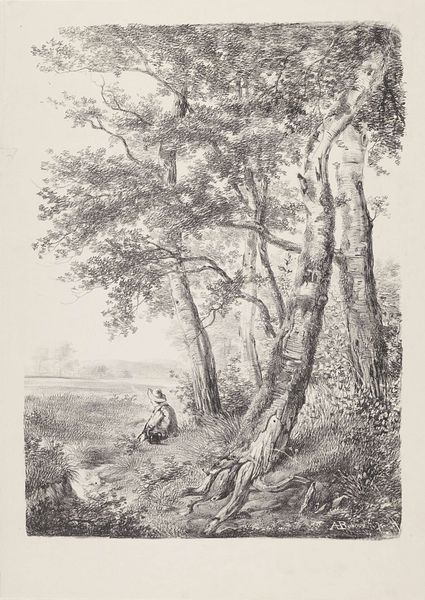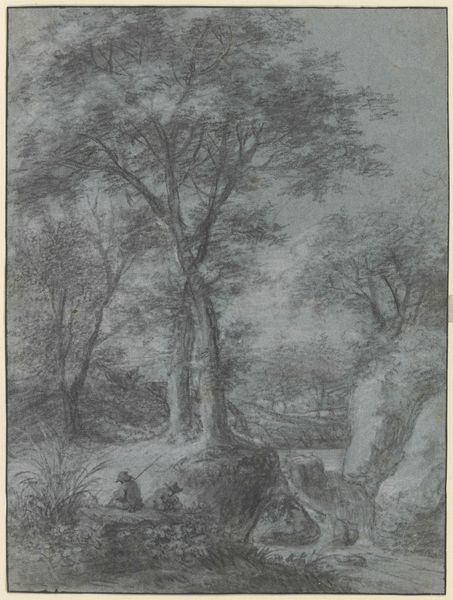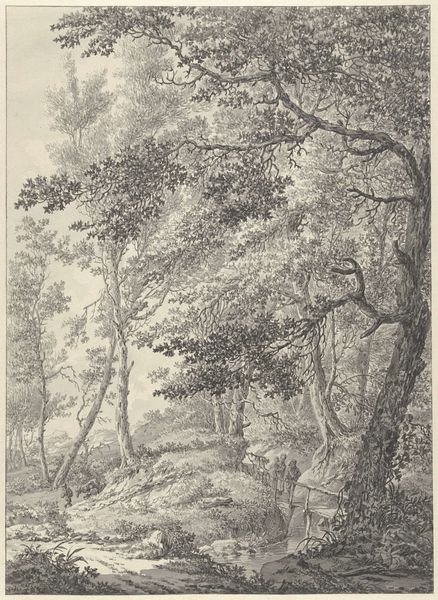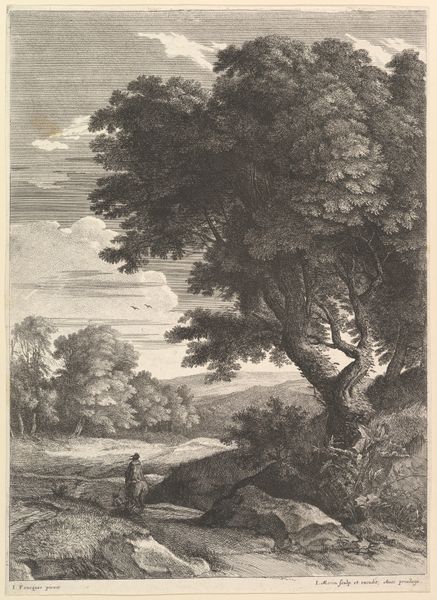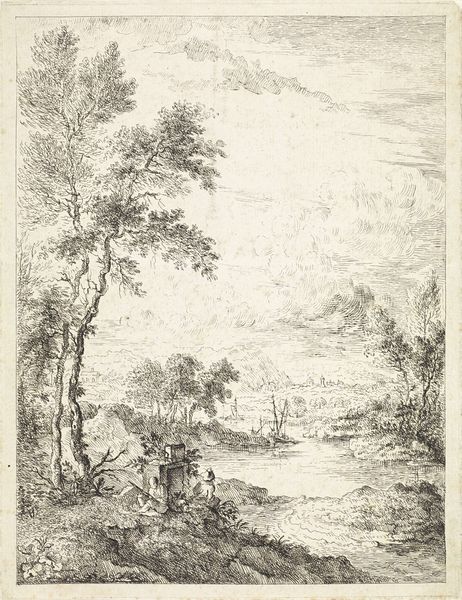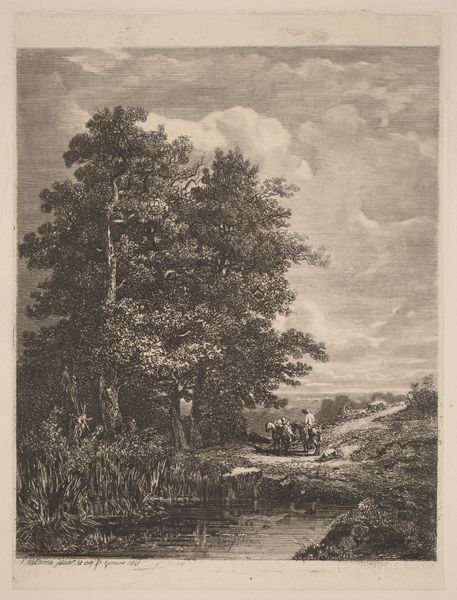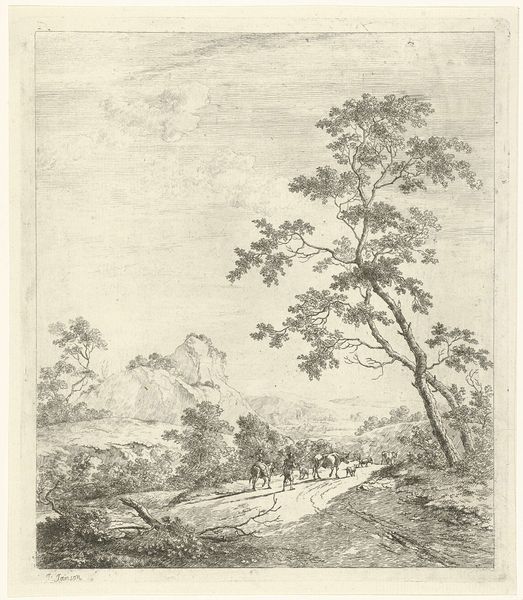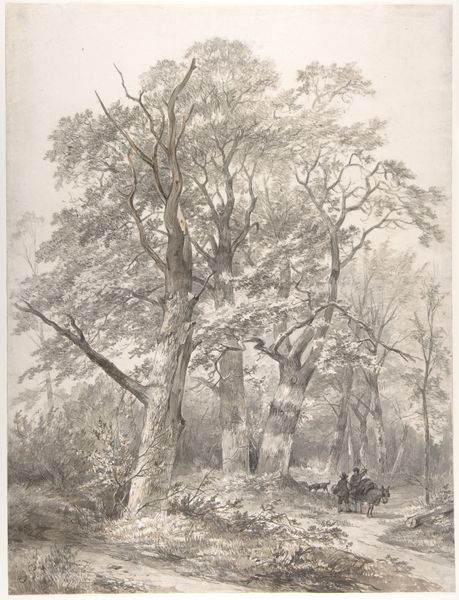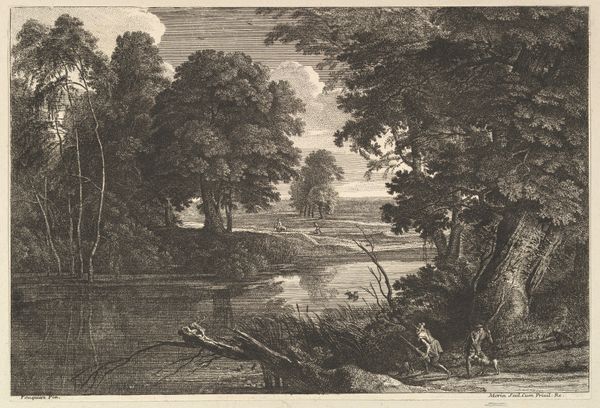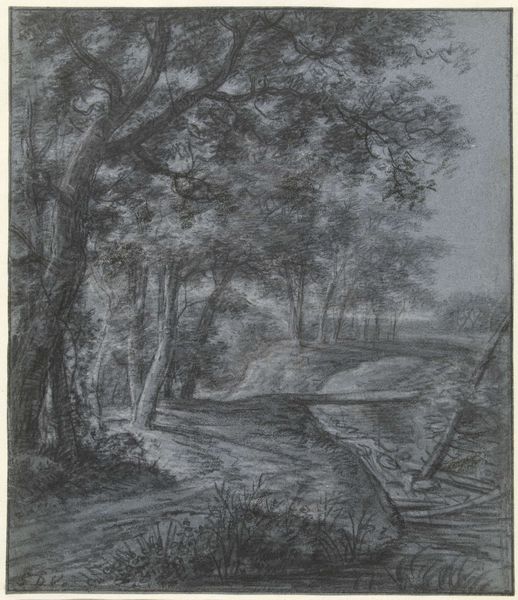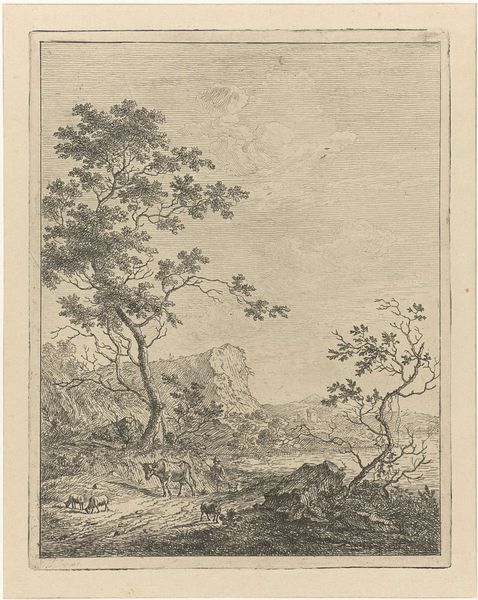
drawing, ink, pen
#
drawing
#
pen drawing
#
dog
#
landscape
#
ink
#
pen
#
genre-painting
#
realism
Dimensions: height 220 mm, width 185 mm
Copyright: Rijks Museum: Open Domain
Curator: What strikes me immediately about this pen and ink drawing is its tranquility. The subdued tones, the delicate lines... it creates a deeply peaceful atmosphere. Editor: It’s a fascinating piece. What we’re looking at is "Bosgezicht met twee jongens met een hond zittend bij het water," or “Wooded Landscape with two boys with a dog sitting by the water” made in 1783 by Hendrik Meijer. Meijer was working within a tradition of Dutch landscape art heavily inflected with Realism at the time. Curator: Yes, Realism's presence is undeniable. Yet, there's an almost idealized quality here, isn't there? The boys, the dog... it evokes simpler times, a pre-industrial pastoral vision. Editor: That touches upon its symbolic strength. Dogs, since antiquity, appear with us acting as sentinels and loyal protectors, guides across different states of being and realms. In 1783, images of fidelity and innocence appealed to broader bourgeois desires during a time of major political upset on the horizon. Even the depiction of carefree young boys has this association: innocent virtue. Curator: Absolutely. It speaks to the bourgeois ideal, creating a comforting space, particularly amidst societal unrest and revolution that soon followed. One begins to recognize it as a calculated projection. Editor: A very astute observation, as always! The act of artistic creation is also always one of selection; by including certain objects or certain groupings we are implicitly excluding others. Consider how many rural populations remained in a state of near feudal penury even in Holland during this period. Curator: Indeed. It's important to also look at the rise of genre painting itself, where scenes of everyday life became increasingly popular among the growing middle class. This type of picture allowed them to assert certain values through depiction. Editor: Yes, and perhaps even imagine themselves a part of that world. I can almost hear the murmur of the stream, the rustling leaves... Meijer created such an evocative space with pen and ink. Its persistent appeal also reflects enduring human longings. Curator: Precisely. Looking at this work, considering its history and enduring symbolism, allows us to understand something not just about 18th-century Holland, but about the construction and projection of enduring visual fantasies. Editor: Beautifully stated. And it's that conversation between historical context and symbolic resonance that brings such vitality to the interpretation of this art.
Comments
No comments
Be the first to comment and join the conversation on the ultimate creative platform.
